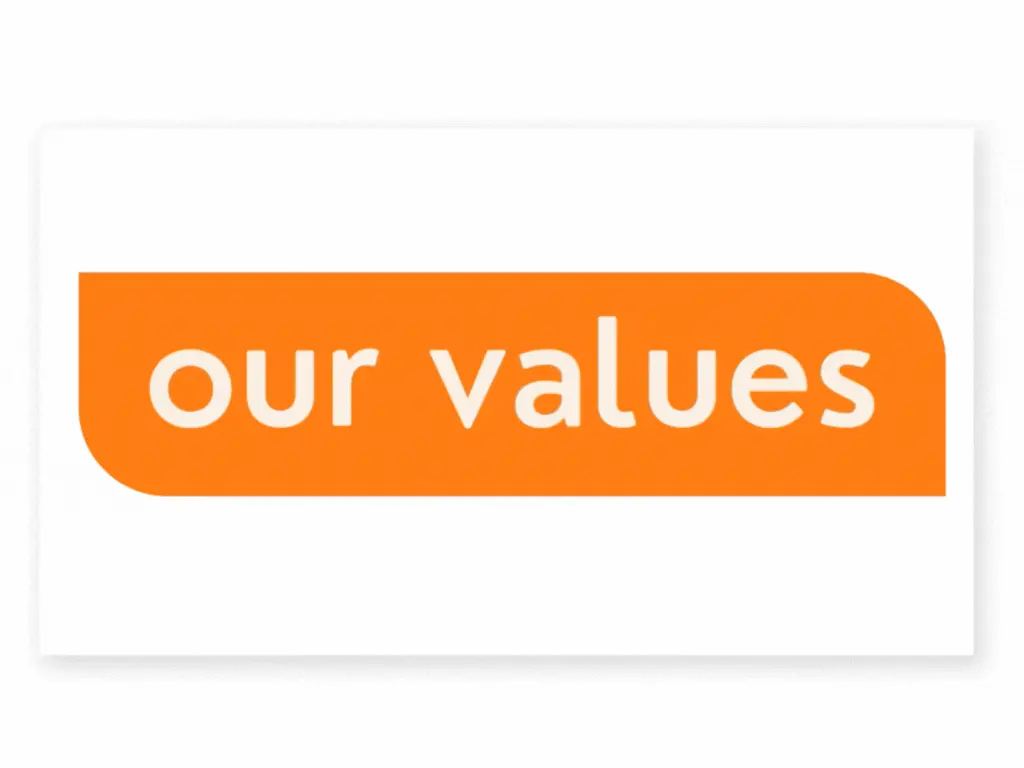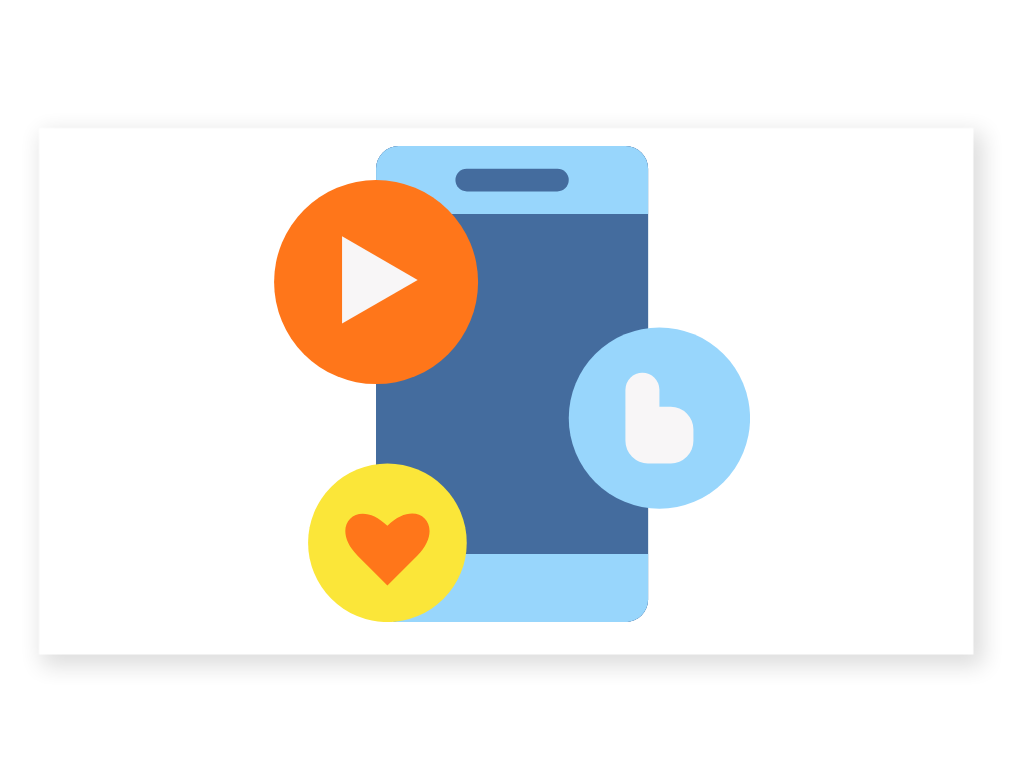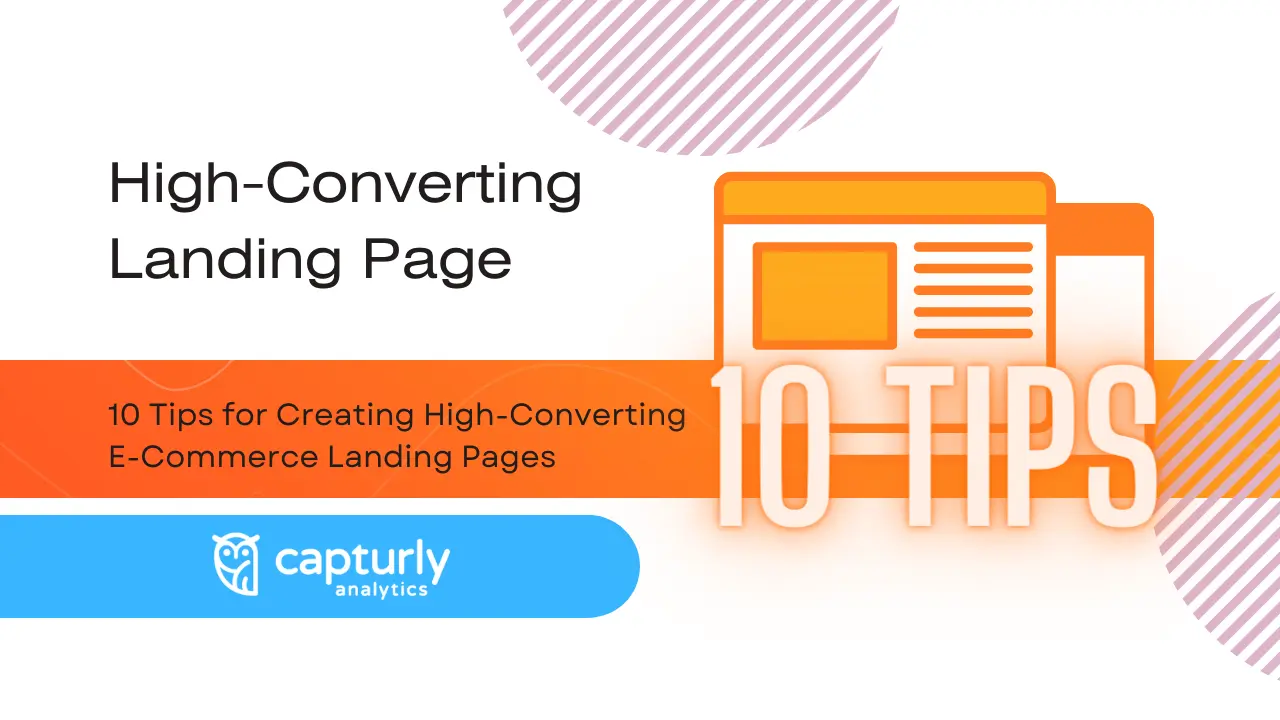Are your landing pages failing to convert visitors into customers? Don’t fret, because we’ve got the solution for you. In this power-packed blog post, we’ll unleash the top 10 tips for creating high-converting e-commerce landing pages.
Say goodbye to lackluster results and hello to skyrocketing sales! Whether you’re a seasoned pro or just starting out, these tips will help you captivate your target audience, showcase your products like never before, and turn clicks into cash.
So, fasten your seatbelts and get ready to transform your e-commerce game with these tried-and-true strategies.
Let’s dive in and unleash the true potential of your landing pages!
Table of Contents
1. Understand Your Target Audience
Understanding your target audience is a key to success, let’s analyze how to do that!
A. Conduct market research
In order to create high-converting e-commerce landing pages, it is crucial to have a deep understanding of your target audience. Conducting thorough market research allows you to gather valuable insights about your potential customers. Start by analyzing demographic data, such as age, gender, location, and income levels. This information will help you tailor your landing page content and design to resonate with your target audience.
Additionally, delve into psychographic research to understand the interests, values, and behaviors of your audience. Look for trends, preferences, and emerging consumer needs within your niche. By staying up-to-date with market trends, you can position your landing pages to align with the evolving demands and expectations of your audience.
B. Define buyer personas
Once you have gathered market research data, it’s time to create buyer personas. Buyer personas are fictional representations of your ideal customers. They embody the characteristics, preferences, and pain points of your target audience. To create effective buyer personas, go beyond demographic information and dig deeper into the motivations, goals, and challenges that your potential customers face.

Consider factors such as their shopping habits, online behaviors, and decision-making processes. Are they tech-savvy and prefer a seamless online shopping experience? Are they price-conscious or value-driven? Understanding these nuances will help you tailor your landing page messaging and design to resonate with specific buyer personas.
C. Identify pain points and motivations
To create a high-converting landing page, it is crucial to address the pain points and motivations of your target audience. Identify the challenges, problems, or needs that your potential customers have within your niche. What are the obstacles preventing them from making a purchase or taking the desired action?
By understanding the pain points, you can position your product or service as the solution. Showcase the benefits and features that directly address these pain points, demonstrating how your offering can improve their lives or solve their problems. Furthermore, tap into the motivations and aspirations of your audience. Highlight how your product or service can fulfill their desires, aspirations, or goals, creating a sense of desire and urgency.
2. Establish a Clear Value Proposition
Value proposition serves as a compelling statement that answers the fundamental question in the minds of potential customers: “Why should I choose this product or service?”
A. Highlight unique selling points
Your e-commerce landing page should clearly communicate what sets your product or service apart from the competition. Identify and highlight your unique selling points (USPs) that make your offering stand out.

Whether it’s superior quality, innovative features, competitive pricing, or exceptional customer service, emphasize these USPs prominently on your landing page. Make it easy for visitors to understand why they should choose your product or service over others in the market.
B. Clearly communicate benefits
Along with highlighting your unique selling points, it is vital to clearly communicate the benefits that your product or service offers to potential customers. How will it solve their problems, make their lives easier, or enhance their experiences?
Craft compelling and concise messaging that outlines the specific benefits and advantages your offering provides. Use clear and easy-to-understand language to ensure that visitors grasp the value proposition quickly.
C. Use persuasive copywriting techniques
Implementing persuasive copywriting techniques is crucial for optimizing the conversion rate of your e-commerce landing page. Craft your copy with language that effortlessly appeals to the emotions, desires, and aspirations of your target audience. By incorporating compelling headlines, persuasive subheadings, and enticing calls-to-action (CTAs), you can motivate visitors to take the desired action.
Leverage storytelling, testimonials, and social proof to build a strong foundation of trust and credibility. It’s important to emphasize the benefits rather than just the features of your products or services, all while maintaining a consistently persuasive tone. For those seeking assistance, you can even consider hiring virtual assistants to help with the creation of persuasive copy that drives conversions.
3. Keep It Simple and Clean
You don’t need to overthink everything just keep it simple and you can make the best for your website!
A. Use minimalist design principles
The design of your e-commerce landing page should follow minimalist principles to create a clean and visually appealing interface. Avoid cluttered layouts, excessive text, and unnecessary elements. Opt for a simple and intuitive design that guides visitors’ attention to key elements, such as product images, CTA buttons, and important information. Embrace white space to create breathing room and enhance readability.

B. Avoid clutter and distractions
Distractions on your landing page can hinder conversions. Remove any unnecessary elements that do not contribute to the primary goal of the page. Eliminate excessive links, ads, or pop-ups that may divert visitors’ attention away from your main message. Maintain a singular focus and guide users toward the desired action without distractions.
C. Optimize page loading speed
Slow-loading landing pages can lead to frustration and abandonment. Optimize your page loading speed by compressing images, minifying code, and leveraging caching techniques. Aim for a fast and seamless user experience, as slow-loading pages can negatively impact your conversion rates. Regularly monitor and optimize your page speed to ensure a smooth browsing experience for your visitors.
4. Create Compelling Headlines
It’s often when reading headlines that customers decide if they really want to read on, so it’s particularly important to use engaging headline copy!
A. Grab attention with an impactful headline
Your headline is the first thing visitors see on your e-commerce landing page, so it needs to grab their attention immediately. Craft a compelling headline that sparks curiosity, creates intrigue, or addresses a specific pain point of your target audience.
Use attention-grabbing words, power words, or even a thought-provoking question to pique their interest and make them want to learn more. Remember, a strong headline sets the tone for the rest of the page and entices visitors to explore further.
B. Use clear and concise language
While it’s important to be attention-grabbing, it’s equally important to be clear and concise in your headline. Avoid vague or overly clever headlines that may confuse visitors. Clearly communicate the main benefit or value proposition of your product or service in a concise manner. Use language that is easy to understand and avoids jargon or complex terminology. The clarity in your headline ensures that visitors quickly grasp the essence of what you’re offering.
C. Incorporate relevant keywords
Including relevant keywords in your headline can help improve the visibility and search engine optimization (SEO) of your e-commerce landing page. Research and identify keywords that your target audience is likely to use when searching for products or services like yours.
Incorporate these keywords naturally into your headline, ensuring that it still reads smoothly and doesn’t feel forced. By including relevant keywords, you increase the chances of your landing page appearing in search engine results, attracting more organic traffic.
5. Use High-Quality Visuals
Visuals are the most attention-grabbing and powerful elements of your landing page which is why it’s extremely important to pay attention to them.
A. Include eye-catching product images
Visuals play a vital role in capturing the attention of visitors and conveying the quality and appeal of your products. Include high-quality product images that showcase your offerings from various angles and highlight their key features.
Use professional photography or compelling graphics that accurately represent your products. Ensure that the images are optimized for web viewing, allowing for quick loading without compromising on quality.
B. Utilize videos and product demos
Videos can be highly effective in engaging and educating your audience about your products or services. Consider creating product demonstration videos or engaging explainer videos that showcase the benefits and usage of your offerings.

Videos can provide a dynamic and interactive experience for visitors, helping them understand your products better and visualize themselves using them. Embed these videos strategically within your landing page to enhance engagement and boost conversions.
C. Ensure visual consistency across the page
Visual consistency is crucial to maintain a professional and cohesive look on your e-commerce landing page. Ensure that the visual elements, such as color scheme, typography, and imagery, are consistent throughout the page.
This consistency helps build brand recognition and creates a visually pleasing experience for visitors. Pay attention to the alignment, spacing, and overall aesthetics of your visuals to create a polished and visually appealing landing page.
6. Implement Clear Call-to-Action (CTA)
Your CTAs are the main goal of your landing page which is why it’s extremely important to create them as perfectly as possible.
A. Use a prominent CTA button
Your call-to-action (CTA) is the key element that drives visitors to take the desired action on your e-commerce landing page. Make sure your CTA button stands out and is easily identifiable. Use a contrasting color that catches the eye and position it prominently on the page.
Ensure that the button is large enough to be easily clickable on both desktop and mobile devices. By making the CTA button visually distinct, you increase the chances of visitors noticing and engaging with it.
B. Clearly state the desired action
To encourage visitors to take action, clearly state what you want them to do. Use concise and action-oriented language in your CTA text to convey the desired action. For example, instead of using generic phrases like “Submit” or “Click Here,” be specific and direct, such as “Add to Cart,” “Get Your Discount Now,” or “Start Your Free Trial.” Clearly communicating the desired action reduces ambiguity and motivates visitors to follow through.

C. Create a sense of urgency
Incorporating a sense of urgency in your CTA can be a powerful motivator for visitors to take immediate action. Use phrases like “Limited Time Offer,” “Sale Ends Soon,” or “Limited Stock Available” to create a sense of urgency and FOMO (fear of missing out).
Highlight any time-limited promotions, discounts, or exclusive deals to entice visitors to act quickly. By creating a sense of urgency, you create a compelling reason for visitors to convert without delay.
7. Leverage Social Proof
Social proofs are able to increase conversion, build trust, influence user behavior and foster engagement so you definitely need them!
A. Display customer testimonials and reviews
Social proof is a persuasive tool that builds trust and credibility with your potential customers. Display customer testimonials and reviews prominently on your e-commerce landing page. Include authentic and specific testimonials that highlight the positive experiences of satisfied customers.
Showcase real names, photos, or even video testimonials for added authenticity. Social proof reassures visitors that others have had a positive experience with your product or service, increasing their confidence in making a purchase.

B. Showcase trust badges and certifications
Trust badges and certifications from reputable organizations or industry associations can further establish credibility and trustworthiness. Display badges, logos, or seals that indicate secure payment options, SSL certificates, or any other relevant credentials. These visual cues reassure visitors that their information will be safe and secure when making a transaction on your e-commerce platform.
C. Include social media sharing buttons
Encourage visitors to share your landing page and products with their network by including social media sharing buttons. By making it easy for visitors to share your offerings on social media platforms, you can expand your reach and tap into the power of word-of-mouth marketing. Additionally, social media sharing buttons create a sense of social validation, as users are more likely to trust recommendations from their peers.
8. Optimize for Mobile Devices
In today’s modern and developed world, almost everyone has a mobile device in their pocket! It is therefore incredibly important that your landing page is compatible with it.
A. Use responsive design techniques
With the increasing number of people browsing and shopping on mobile devices, it is essential to optimize your e-commerce landing page for mobile responsiveness. Utilize responsive design techniques that adapt the layout, content, and functionality of your page to different screen sizes. This ensures that your landing page looks and functions seamlessly across various devices, providing a positive user experience.

B. Ensure seamless navigation on mobile
Mobile users have different navigation needs compared to desktop users. Simplify and streamline the navigation on your mobile landing page to make it user-friendly. Optimize menu options, minimize the number of clicks required to reach important sections, and prioritize key elements based on their importance. Ensure that visitors can easily find the CTA button and navigate through the page effortlessly on their mobile devices.
C. Test and optimize for various screen sizes
Test your e-commerce landing page on different mobile devices and screen sizes to ensure optimal display and functionality. Pay attention to font sizes, button sizes, and image scaling to ensure that all elements are legible and interactive. Conduct thorough testing to identify any issues or inconsistencies and make necessary adjustments to create a seamless mobile experience.
9. Optimize for Search Engines
It’s very important that your landing page is easily found by users on Google, so this is a very important step.
A. Conduct keyword research
Keyword research is essential for optimizing your e-commerce landing page for search engines. Identify relevant keywords and phrases that your target audience is likely to use when searching for products or services like yours.
Utilize keyword research tools to identify high-volume and low-competition keywords that align with your offerings. By understanding the search intent behind these keywords, you can tailor your landing page content to match the needs and queries of your potential customers.
B. Incorporate relevant keywords in page content and metadata
Once you have identified the relevant keywords, strategically incorporate them into your landing page content and metadata. Include them in your page titles, headings, subheadings, and body content, ensuring that they appear naturally and fit contextually. However, avoid keyword stuffing, as it can harm your search rankings.
Optimize meta tags, including meta descriptions and alt tags for images, to provide search engines with relevant information about your landing page. By incorporating keywords thoughtfully, you enhance the visibility of your landing page in search engine results.
C. Create descriptive and SEO-friendly URLs
Crafting descriptive and search engine optimization (SEO)-friendly URLs is crucial for search engine optimization. Create URLs that clearly indicate the content of your landing page and include relevant keywords. Use hyphens to separate words and keep the URL concise and user-friendly.
A descriptive URL not only improves search engine visibility but also makes it easier for users to understand and remember the link. Avoid using random strings of numbers or characters in your URLs, as they provide little value for search engines or users.

10. A/B Test and Analyze
When you are done with everything and you considered every necessary step testing analyzing and in the end optimizing is crucial.
A. Perform A/B tests to optimize conversions
A/B testing is a valuable technique for optimizing your e-commerce landing page and improving conversions. Create multiple variations of your landing page, each with a specific element or layout change, and test them against each other.
To effectively achieve this, it is advisable to employ a website heatmap tool. By harnessing the power of heatmaps, you gain the ability to assess and evaluate the outcomes and performance of your endeavors. Heatmaps provide valuable insights into the number of clicks received by each element on your website. Additionally, they enable you to compare different versions and promptly identify any bugs or issues that may have surfaced on your e-commerce landing page.
Measure and compare the performance of these variations by tracking conversion rates, click-through rates, and other relevant metrics. This data-driven approach allows you to identify which version performs better and make data-backed decisions to optimize your landing page for higher conversions.
B. Analyze user behavior using analytics tools
Utilize analytics tools, such as Capturly, to gain insights into user behavior on your e-commerce landing page. Analyze metrics like bounce rate, time on page, and click patterns to understand how visitors interact with your page. Also, take a look at user behavior patterns with the help of behavior analytics features.
Identify areas of improvement, such as high exit rates or low engagement, and use this data to inform your optimization strategies. Understanding user behavior helps you identify pain points, usability issues, or content gaps that may be hindering conversions.
C. Continuously iterate and improve
Optimization is an ongoing process, and it’s important to continuously iterate and improve your e-commerce landing page based on data and insights gathered from A/B testing and analytics. Implement changes based on successful variations, user feedback, and industry trends. Monitor the impact of these changes through continuous tracking and analysis.
Regularly refine your landing page by making incremental improvements, experimenting with new ideas, and staying ahead of the competition. This iterative approach ensures that your landing page remains effective and optimized for maximum conversions.
The Bottom Line
Remember, a high-converting e-commerce landing page is not a one-size-fits-all solution. It requires a deep understanding of your target audience, ongoing experimentation, and a commitment to continuous improvement. By implementing the tips outlined in this blog, you can create landing pages that engage, persuade, and convert visitors into loyal customers, driving the success of your e-commerce business.
______________________________________________________________________________
Author Details:
Name: Amaiya RBio: Amaiya R, Content Marketing Manager at VirtualStaff.ph, is a professional content writer holding more than four years of experience in curating varied content pieces for multiple niches. Whether it is web copy, social media posts, or blogs, she has worked on all aspects of writing.
Don't forget, sharing is caring! :)

